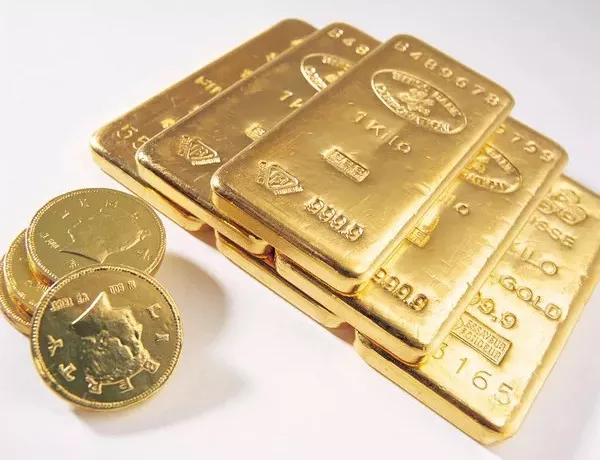The global stage is set for a volatile period in the gold market as conflicting messages reverberate from the recent Jackson Hole Symposium. The yellow metal, which has been trading around $1,920 per troy ounce, is grappling with a lack of clarity amid shifting economic indicators and geopolitical tensions.
In a surprising turn of events, the United States (US) Treasury yields underwent an unexpected pullback, triggering a rebound in the price of gold. This move has left analysts puzzled, as it contradicts the hawkish remarks made by the US Federal Reserve (Fed) officials during the symposium. While some experts expected higher yields to exert pressure on gold, the precious metal seems to have forged its own path.
The Jackson Hole Symposium, known for its ability to influence global markets, delivered mixed statements from major central bank officials. These contradictory messages have left investors on edge, uncertain about the direction of the world’s economy. Despite the symposium’s reputation for providing clarity, this year’s edition has sown the seeds of confusion.
The economic landscape is equally perplexing. US Durable Goods Orders for July painted a grim picture, showing a 5.2% reduction compared to the anticipated 4%. This decline, a sharp contrast to the 4.4% reading in June, raises questions about the underlying stability of the US economy. However, the job market appears to be holding its ground, with Initial Jobless Claims reflecting favorable employment conditions. This seemingly positive news has, paradoxically, stoked fears of inflation, stirring up an already complex situation.
While these economic indicators are usually reliable guides, their contradictory nature has muddied the waters, making it difficult to gauge the true health of the economy. Market participants are now faced with the daunting task of navigating through this web of mixed signals to make informed decisions.
Adding to the global unease are China’s economic concerns. The decline in China’s Total Industrial Profits (YoY) by 15.5% during the first seven months of 2023 has sent ripples through international markets. This data has raised questions about the strength of China’s economic engine and its potential impact on the global supply chain.
US Commerce Secretary Gina Raimondo’s four-day visit to Beijing, which aimed to bolster business ties between the two nations, has garnered significant attention from gold traders. However, this diplomatic effort comes at a time when the relationship between the US and China is at an all-time low. The visit’s success or failure could have far-reaching consequences for the global economy, with the gold market closely attuned to its outcome.
Investors are also keeping a watchful eye on China’s upcoming services and manufacturing Purchasing Managers’ Index (PMI) releases. These indicators will provide valuable insights into the state of China’s economy and potentially impact the trajectory of the gold market.
Meanwhile, the US Dollar Index (DXY), which measures the strength of the US dollar against six major currencies, has been trading lower at around 104.10. Despite the hawkish tones emanating from the Fed in the previous week, the DXY’s performance is indicative of market skepticism towards the central bank’s intentions. This divergence between the Fed’s rhetoric and market sentiment underscores the uncertainty currently clouding global financial markets.
Fed Chairman Jerome Powell’s recent remarks further highlight the complexities facing the gold market. While Powell reiterated his support for maintaining “higher for longer” interest rates, he conceded that this policy approach has its limitations. The elusive nature of the neutral rate, which the Fed cannot definitively pin down, underscores the challenges of monetary policymaking in the current economic climate.
Addressing the delicate balance between achieving price stability and accommodating economic uncertainties, Powell emphasized the need for adaptable and nimble decision-making in monetary policy. This sentiment resonates with the broader market sentiment, which is characterized by its cautious and hesitant approach.
In conclusion, the gold market finds itself at a crossroads, with conflicting signals emanating from multiple fronts. The Jackson Hole Symposium’s mixed messages have cast a shadow of uncertainty over the global economic outlook. Economic indicators, once reliable guides, have taken on a contradictory nature, leaving investors baffled.
China’s economic concerns and diplomatic endeavors further contribute to the air of unpredictability. The interplay between these factors has resulted in a market environment where caution and vigilance are paramount. The US Dollar Index’s divergence from the Fed’s stance serves as a reminder that market sentiment can often defy expectations, leading to unexpected outcomes.
As investors grapple with these challenges, one thing remains clear: the path ahead for the gold market is anything but straightforward. The complex interplay of economic indicators, geopolitical tensions, and market sentiment will ultimately shape the trajectory of this precious metal. In such a climate of uncertainty, adaptability and a keen awareness of the nuances at play will be the key to navigating the intricate web of global finance.

